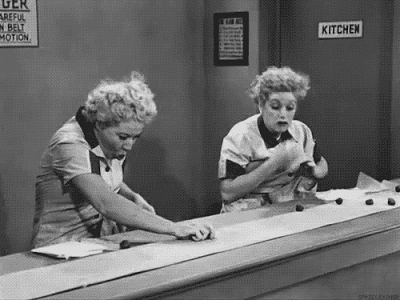by Cole Smead, CFA, Smead Capital Management
Dear fellow investors,
My colleague Will Keenan recommended an outstanding book, The Professor, the Banker, and the Suicide King, by Michael Craig. The book is a short and entertaining read of how Andy Beal played the best poker players in the world heads-up. He not only gambled toe-to-toe, but he also reminded them that they were doing what everyone should think poker is: gambling. Scared money is still scared money. The poker pros were playing on scared money compared to Andy Beal.
In the story, Andy spent countless hours playing with friends, colleagues and anyone who he could test poker theories with. Andy was seeking to change his style of play to where it would be tough for the professional players to adapt to him. Barring the issues he ran into like getting tired and sloppy later in the day, this is a wonderful way to think about stock picking. Poker is gambling. Phil Carret framed common stock investing on this gambling paradigm when he wrote his book titled The Art of Speculation. He was an incredible stock picker with a long career but viewed it as speculation.
In a plethora of his books, Michael Mauboussin has argued that the stock market is a complex, highly adaptive system. When one style does well, the market will adapt to that style and take the potential profit lower over time. This is the same thing a poker pro would do. Figure out your style and biases to take advantage of your way of allocating capital at the poker table.
No different than Andy Beal, Warren Buffett has had to adapt his style. Buffett was a disciple of Benjamin Graham. Graham would buy a plethora of securities at a discount to the tangible assets of the business (aka net-nets). He would do this across broad securities to allow the style to not be ruined by a single issuer event. The principal Buffett adapted to was to buy something cheaply relative to the value of the business. He stole other ideas like portfolio concentration from John Maynard Keynes at that time as well.
He continued investing like this into the 1960s when Munger’s influence began to weigh heavily on Buffett. It was no shock to Buffett that value alone wouldn’t be the only way to make money. The cult of value investing was slowly growing, and naturally, over time, this style would lose some of its profit from the market of players adapting.
Munger taught Buffett that the quality of the business mattered a great deal. See’s Candies has been the poster child for this principal. Buffett has said numerous times how stingy he was on the price, whereas over time it was of little importance. The high returns on capital and the longevity of what See’s Candies has done proved to Munger and Buffett that the quality of the business must be accounted for while looking at the valuation. They are weights that must be balanced against each other.
Buffett’s big test with that theory came at two points. First, Disney in 1965. Buffett bought 5% of Disney for $4 million. They had produced The Mary Poppins movie in 1964 and were spending a large amount of capex to build my favorite ride at Disneyland, Pirates of the Caribbean. Buffett commented he was paying five times ride at his 1996 UNC business school talk (link). One year later, Disney had gone up 50%. Buffett sold it. In 1996, his $4 million investment was worth $1 billion if he had held it. It’s even worse today. It showed Buffett that the quality of a business like Disney has historically produced was something to behold.
After that came Buffett’s purchase of Coca-Cola in 1988. He was criticized at the time for paying for what in the 1980s was a nosebleed high-teens P/E (price-to-earnings) multiple. The value crowd was following what he did, but as the flop came out on this hand, they didn’t know how to read his play. He was looking for other ways to make money. As Beal learned, king-deuce is a winning hand about 53% of the time. Maybe Buffett could find a hand that had good odds, but others didn’t play because they didn’t understand the odds.
Quality was the factor that Buffett was proving in Coca-Cola, as he had in See’s. Coke could pay off its debt with one year of free cash flow and ran an attractive return on equity of roughly 30-35%. Coca-Cola then began producing higher returns of 50% ROE (return-on-equity) and continuing to maintain a strong balance sheet. We believed the other players continued to misunderstand Buffett’s style. They weren’t taking into account that Coke was producing far higher returns on capital, a significant attribute in quality. It didn’t fit into their simple low P/E multiple view of the action at the table. Alas, the market was slow to adapt to this tell. He began buying more in 1991.
By the late 1990s, the market had caught on to the value of Coca-Cola’s business and Warren’s reason for playing the game that way. In effect, the players in the market adapted. The stock has since been a serial underperformer, compared to the S&P 500 Index, for the last 25 years.
Andy Beal considered winning hands like king-deuce a likely winner, but the best time to use that style was when no others would play a hand like it. He was playing heads-up, which makes it slightly different from playing a 10-handed table in poker or the entire stock market, but the principle holds true.
How does this direct us as stock pickers and “speculators” in the Phil Carret sense of the word? Value people liked playing tight. Buy low, sell high. They treated the market like a simple formula. They all adapted to that formula. The cult of quality has been built up. Strong balance sheets and high returns are factors that must be weighed. It doesn’t mean that pocket rockets (ace-ace) won’t win a high percentage of the time. but if the board flop comes out as two-two-king: pocket rockets may be worth nothing.
We believe the market has adapted to quality. Even the value players have adapted and most of them have attached quality to their marketing materials. The style has been adapted and we believe the next era won’t reward quality as it has over the recent past. In markets, we believe the winning hand moves around the table just as it does in poker. Luckily Buffett continues to adapt his play lately by selling Apple and buying OXY. The way we see it, the future winning hands look cheaper and more cyclical, but provide attractive returns on capital for the business in his view and in ours.
Fear stock market failure,

Cole Smead, CFA
The information contained in this missive represents Smead Capital Management’s opinions, and should not be construed as personalized or individualized investment advice and are subject to change. Past performance is no guarantee of future results. Cole Smead, CFA, CEO and Portfolio Manager, wrote this article. It should not be assumed that investing in any securities mentioned above will or will not be profitable. Portfolio composition is subject to change at any time and references to specific securities, industries and sectors in this letter are not recommendations to purchase or sell any particular security. Current and future portfolio holdings are subject to risk. In preparing this document, SCM has relied upon and assumed, without independent verification, the accuracy and completeness of all information available from public sources. A list of all recommendations made by Smead Capital Management within the past twelve-month period is available upon request.
©2024 Smead Capital Management, Inc. All rights reserved.
This Missive and others are available at www.smeadcap.com.














